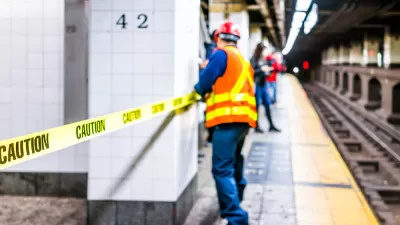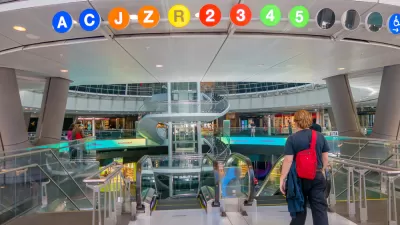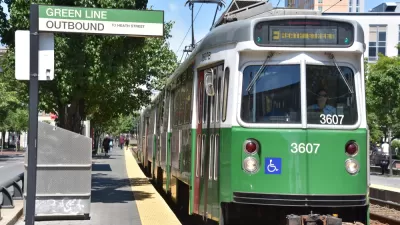The first case study by the Transit Costs Project at New York University's Marron Institute offers a long awaited, and long necessary, glimpse into the bloated costs of construction in the United States.
"Why are American rail projects so costly? The initial results of an ambitious project by three researchers at New York University’s Marron Institute suggest one culprit hiding in plain sight: pointlessly fancy train stations," writes Connor Harris.
The Marron Institute team includes Alon Levy, who spurred some of the first widespread attention to the high costs of transit construction in the United States on the blog Pedestrian Observations before attracting attention from the mainstream media.
Until studies by the Marron Institute and the Eno Center for Transportation, there was a lack of scientistic information about transit spending in the United States.
As detailed by Harris, the team at Marron Institute's first case study focused on the Green Line Extension (GLX) built by the Massachusetts Bay Transportation Authority (MBTA).
"In principle, GLX is simple," writes Harris. "It extends an existing light-rail line 4.3 miles into Boston’s inner suburbs, mostly in a trench that already holds commuter rail tracks. But GLX’s costs ballooned after planning began in 2006, reaching $3 billion in 2015—more expensive per mile than most subways."
As for why the cost for the project ballooned so quickly and so completely, the researchers identified bells and whistles on the line’s seven stations as the source of much of the bloat.
FULL STORY: Why Is American Rail So Costly?

Manufactured Crisis: Losing the Nation’s Largest Source of Unsubsidized Affordable Housing
Manufactured housing communities have long been an affordable housing option for millions of people living in the U.S., but that affordability is disappearing rapidly. How did we get here?

Americans May Be Stuck — But Why?
Americans are moving a lot less than they once did, and that is a problem. While Yoni Applebaum, in his highly-publicized article Stuck, gets the reasons badly wrong, it's still important to ask: why are we moving so much less than before?

Research Shows More Roads = More Driving
A national study shows, once again, that increasing road supply induces additional vehicle travel, particularly over the long run.

Concrete to Community: A Schoolyard Makeover in West Philly
With guidance from the Trust for Public Land, third graders at Overbrook Elementary are leading the redesign of their asphalt schoolyard into a vibrant green space, learning valuable skills and creating lasting community impact in the process.

Which US Rail Agencies Are Buying Zero-Emissions Trains?
U.S. rail agencies are slowly making the shift to zero-emissions trains, which can travel longer distances without refueling and reduce air pollution.

San Diego School District Approves Affordable Housing Plan
The district plans to build workforce housing for 10 percent of its employees in the next decade and explore other ways to contribute to housing development.
Urban Design for Planners 1: Software Tools
This six-course series explores essential urban design concepts using open source software and equips planners with the tools they need to participate fully in the urban design process.
Planning for Universal Design
Learn the tools for implementing Universal Design in planning regulations.
City of Moreno Valley
Institute for Housing and Urban Development Studies (IHS)
City of Grandview
Harvard GSD Executive Education
NYU Wagner Graduate School of Public Service
City of Cambridge, Maryland
Newport County Development Council: Connect Greater Newport





























